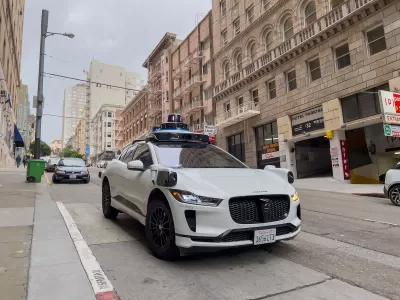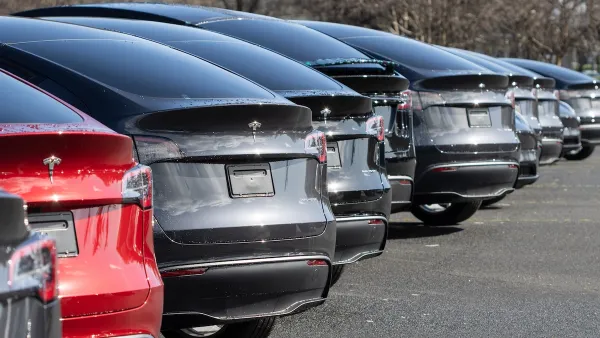Autonomous vehicles are no longer perpetually “five years away.” They are here now. Planners must act now to ensure they don't degrade city life.

“For nearly as long as I've followed planning and transportation, the running joke, recited in conference sessions and at happy hours, has been that self-driving cars are at least five years away -- and always will be. But, no. A few days ago, I boarded an otherwise empty Jaguar I-Pace, festooned with sensors, and driven according to a dataset aggregating the wisdom gained from tens of millions of miles of driving.”
Jevon's Paradox tell us that the more efficient something is, the more heavily it gets consumed. What does that mean for safe, affordable, carbon-lite transportation?
“Jevon will get jump-started when, inevitably, some developer in Hemet, Poway, Camarillo, or Pleasanton builds huge houses on huge tracts of land and give away free Waymo memberships with each one of them. The discomfort of the hour or so it would take to reach downtown San Diego, Los Angeles, or San Francisco from the exurbs will give way to the pleasantries of reading, watching movies, getting foot massages, or whatever. Super-commuting could become robo-commuting, and we're going to have a huge traffic problem on our hands.”
FULL STORY: Will Waymo Help Urbanism -- Or Hurt It?

Maui's Vacation Rental Debate Turns Ugly
Verbal attacks, misinformation campaigns and fistfights plague a high-stakes debate to convert thousands of vacation rentals into long-term housing.

Planetizen Federal Action Tracker
A weekly monitor of how Trump’s orders and actions are impacting planners and planning in America.

San Francisco Suspends Traffic Calming Amidst Record Deaths
Citing “a challenging fiscal landscape,” the city will cease the program on the heels of 42 traffic deaths, including 24 pedestrians.

Defunct Pittsburgh Power Plant to Become Residential Tower
A decommissioned steam heat plant will be redeveloped into almost 100 affordable housing units.

Trump Prompts Restructuring of Transportation Research Board in “Unprecedented Overreach”
The TRB has eliminated more than half of its committees including those focused on climate, equity, and cities.

Amtrak Rolls Out New Orleans to Alabama “Mardi Gras” Train
The new service will operate morning and evening departures between Mobile and New Orleans.
Urban Design for Planners 1: Software Tools
This six-course series explores essential urban design concepts using open source software and equips planners with the tools they need to participate fully in the urban design process.
Planning for Universal Design
Learn the tools for implementing Universal Design in planning regulations.
Heyer Gruel & Associates PA
JM Goldson LLC
Custer County Colorado
City of Camden Redevelopment Agency
City of Astoria
Transportation Research & Education Center (TREC) at Portland State University
Jefferson Parish Government
Camden Redevelopment Agency
City of Claremont





























